Cattle Killing Compilation Looking To Kill All World Wide Cows To Fight Climate Change
In the latest effort to reduce emissions from agriculture, Ireland said it may kill all 2,000,000 cows. Meanwhile, climate activists have American farms and ranches in the crosshairs. This video shows several cattle in varying situations being shot to show and educate the people that don't know what happens when cattle are killed for human consumption out in the field (not in an abattoir).This video is not made to shock people. It is made to show that with the right skill, training and patience cattle can be humanely killed. You will see that the cattle are relaxed and in their own environment.
The rifle used is a Ruger bolt action .22 Magnum. The ammunition used was "CCI". All of the cattle had their blood vessels severed immediately after they were shot.
The animals were shot for the owner of them to eat.
The animals were all shot on different days.
The animals were all shot on different properties.
The animals all died instantly.
The animals that are together are together to lessen the stress on them as they are a herding animal and feel threatened and vulnerable when they are alone.
When a standing animal is shot, it should instantly drop to the floor. In cattle, the neck contracts in a spasm for 5 to 10 seconds. These are normal reactions. Rhythmic breathing must be absent and the animal must not moan, bellow, or squeal. All eye reflexes should be absent. Gasping or gagging reflexes are permissible because they are signs of a dying brain. Within 10 seconds, the neck and head should be completely relaxed. ln a clinical situation and in a slaughter plant, the animal‘s limbs may make uncoordinated movements for several minutes.
In the latest effort to reduce emissions from agriculture, Ireland said it may kill 2,000,000 cows. Meanwhile, climate activists have American farms and ranches in the crosshairs. Climate activists are coming for livestock producers and farmers.
European governments have been targeting the agriculture industry for several years. The Telegraph reports that Ireland’s government may need to reduce that country’s cattle herds by 2,000,000 cows over the next three years to meet climate targets.
In an effort to reduce nitrogen pollution, Reuters reported the European Union last month approved a $1.6 billion Dutch plan to buy out livestock farmers.
Front And Center
Now the Biden administration is targeting American agriculture.
Special President Envoy For Climate John Kerry recently warned at a climate summit for the U.S. Department of Agriculture that the human race’s need to produce food to survive creates 33% of the world’s total greenhouse gasses.
“We can’t get to net-zero. We don’t get this job done unless agriculture is front and center as part of the solution,” Kerry said.
Microsoft Billionaire Bill Gates also is obsessing about cattle emissions, providing financial support to companies that are developing seaweed supplements and gas masks for cows.
It’s ‘Groupthink’
Kacy Atkinson, an agricultural advocate who raises cattle in Albany County, told Cowboy State Daily that this conversation on emissions from the industry isn’t considering the beneficial impacts of cattle to the environment and the climate.
“Groupthink happens a lot around the climate change conversation. We get tunnel visioned on one piece of it without considering the full ramifications of what's going to happen if we remove cattle from the land,” Atkinson said.
She said cattle contribute to drought resistance, soil health and wildfire reduction. Just before cattle were introduced to North America and the industry began raising them, Atkinson said there were thousands of buffalo roaming the plains.
Cows and buffalo are both ruminants, which is a type of animal that brings back food from its stomach and chews it again. These animals’ digestive systems produce methane emissions. Today’s cattle population is similar in numbers to that of the buffalo herds.
“So, the methane emissions from ruminant animals aren’t anything new,” Atkinson said.
Trapping Carbon
Cattle also benefit plant life, Atkinson said. “You need ruminant animals to forage grasses, because they’re the only things that can,” she explained. Pigs, for example, are monogastric and can’t break down high fiber content in grasses. Cow’s digestive system can break the grasses down, and then they fertilize the ground.
So, through proper cattle grazing management, Atkinson said the cattle she’s raising are helping plants to grow. In the atmosphere, the methane they burp out — most of it is released through the mouth of the animal — breaks down in 10 to 15 years into carbon dioxide and water. The plants that cattle help to grow use that carbon dioxide. The carbon then gets put back into the soil through the grasses’ roots.
“So the cattle are essential in helping to keep that carbon trapped in the ground,” Atkinson said cattle have other benefits to the climate that are being ignored in the focus on just their emissions. Whenever soil cracks or fissures, it releases carbon into the air.
The animals walking upon the soil compacts it and helps keep the carbon trapped in the soil. She said one study done by the University of Florida found that between 10% and 30% of the world’s carbon storage is found under the feet of U.S. cattle.
Increasing Food Insecurity
Brett Moline, spokesperson for the Wyoming Farm Bureau, told Cowboy State Daily that the regulations that would likely flow from ideas like Kerry’s would only make farming and ranching more expensive.
Ultimately, those expenses would get passed down to the consumer. “It’s going to make food expensive, and we still have a large part of the population that is food-insecure,” Moline said.
Of course, people aren’t going to stop eating. If farms in North America and Europe shut down, food production will move to countries with lax environmental regulations. The end result, Moline said, is less environmentally friendly farming producing the world’s food supply.
As far as the climate impacts, Moline said those are getting blown out of proportion where everything is blamed on climate change, such as the drought in the past couple years.
“Two years ago, it was drier than my jokes,” he said. “Now we’re getting wet again. Climate ebbs and flows.”
Other Benefits
Atkinson said that one in eight people in the U.S. is considered food insecure, which means they don’t have a sufficient source of nutrition.
By removing cattle, Atkinson said, they’re just furthering that problem by eliminating a valuable protein source from the American diet.
There also are a lot of food byproducts that cows consume as feed. This includes the leftover pulp from orange juice production, the hulls from almonds, and the peels of potatoes from making french fries.
“All that would just end up in a landfill,” Atkinson said.
Cattle are also not just a source of food. Products including some laundry detergents, nail polish remover, soaps, lotions, footballs, and pharmaceuticals are made from animal byproducts. “It would be a pretty significant undertaking to replace all of the things that we get from them,” Atkinson said.
PETA calls climate change plan that culls 2,000,000 cows 'ridiculous': 'Government kill squads' won't help and The animal rights organization called on everyone to go vegan in order to save the planet.
Ireland officials are discussing a plan to cull around 2,000,000 cows in an effort to combat climate change, according to multiple reports, causing backlash from Irish farmers.
Amid the pressure from the European Union to fight climate change, one of the proposed plans would take place over three years by farmers voluntarily culling 665,000 cows a year, which would reduce the national dairy herd by 80%, and cost roughly $2.14 billion annually, according to the Telegraph.
In a statement provided to Fox News Digital, a PETA spokesperson said how the dairy industry already "routinely slaughters ‘spent’ cows on a massive scale to boost profits."
"Hiring government kill squads as a solution to the climate catastrophe is ridiculous when a global shift to vegan eating would discourage farmers from breeding these animals in the first place," the spokesperson said, adding that "PETA encourages everyone to start taking personal responsibility for saving the planet by going vegan."
The cull, if decided upon, would be entirely voluntary and serve as part of a "retirement exit scheme" for farmers.
Senator Pauline O'Reily, a member of Ireland's Green Party, said farmers won't restock herds at the same level, thus reducing the overall cow population overtime.
"Over time, farmers don’t restock to the same level, as they did, so that over time, their herds are reducing," she said, "It isn’t a cull that is taking out cows and killing them, that’s not what it is. And that creates huge fear and anxiety amongst farmers."
"Actually what this is, is an exit scheme for dairy farmers, I come from a dairy farming background myself, that the farmers themselves have asked for, and have called for. Because they can see the schemes, the environmental schemes that are oversubscribed. Every single environmental scheme in the country is oversubscribed. Farmers want to sign up to it, and dairy farmers also want to scheme, so that they can sign up to it, so that they get money in their pockets if they do reduce their herds. But it’s completely voluntary," she added.
According to a response from a spokesperson for the Department of Agriculture, Food and the Marine, the policy is one of a number of "modeling documents" that is considered by the department, and a "final policy decision" had not been made.
"As part of the normal work of Government Departments, various options for policy implementation are regularly considered," the Department stated.
According to the Environmental Protection Agency, Ireland's agricultural sector accounted for 38% of national Greenhouse Gases (GHGs) emissions in 2021. The predominant byproducts were methane from livestock, and nitrous oxide from the use of nitrogen fertilizer and manure management.
Methane gas from livestock contributes to a major portion of the world greenhouse gasses, with methane accounting for 44% of total livestock emissions, according to Food and Agricultural Organization of The United Nations. In an effort to curb emissions from animals and livestock, other countries have also considered culling large numbers of animals to meet climate goals.
Stephanie Nash told 'Tucker Carlson Tonight' the government needs to stop telling farmers what to do A Tennessee farmer condemned the idea of forcing cows to wear masks and diapers to contain their methane emissions, saying the people who came up with the idea have "gone to loony town."
French dairy giant Danone announced in mid-January it is considering putting masks on cows to trap their burps in an effort to reduce methane emissions by 30% come 2030. In the future, cows could also be forced to wear diapers to trap their flatulence.
Stephanie Nash called the whole thing udder madness Wednesday on "Tucker Carlson Tonight." "Well, Tucker, you know, I'm not going to wear a mask. I'm not going to allow my cows to wear a mask," she said, Nash put a mask on one of her cows during the interview to test the theory but explained "she's not having it" and is "struggling to breathe."
Livestock, especially cows and cattle, produce methane, a dangerous greenhouse gas that warms the atmosphere, as part of their normal digestive process, according to the Environmental Protection Agency.
New data from the United Nations Environment Programme (UNEP) and the Climate and Clean Air Coalition found livestock emissions-manure and gastroenteric releases - account for roughly 30% of methane emissions.
Nash told host Tucker Carlson her farm is doing "big things to cut emissions."
"We have ruminants on our farm that can digest byproducts. A good example is we feed our cows soybean meal that comes from soy oil production," she explained.
"And you have to ask yourself, millions of tons per year – if we don't have cows to digest that byproduct, it has to go somewhere. It has to go to a landfill. It has to go on, you know, into a waste management. And that's going to be very harmful. That's going to leave an imprint, you know, for our country and gases going into our environment." Carlson asked if putting a diaper on a cow would even be feasible and wondered if the whole thing was a joke. "I think these people have gone to loony town. There's no possible way that I'm going to put a diaper on my cow," she stated. The Chapel Hill farmer said her cows have to be able to walk around, lay down, eat and drink water and generally live a comfortable life.
"Our animals are under the best stewardship, and we want them to be as comfortable as possible. And telling me how to do my job is not the way to eliminate emissions. We have to be smart about this. We have to listen to the farmer [or] rancher and what is best for our animals."
The woke environmentalists has put forth more methane than this globe can handle but yet they blame cows, they blame gas stoves, gas cars. They haven’t come up with any viable solutions other than destroying valuable paintings and emitting toxic fumes from their mouths.
For the sake of their cause we see them jetting the globe, living in mansions, and buying more than they need that leaves huge carbon footprints, but they are ‘conscientious’ so somehow they are exempt. They don’t practice what they preach. They hide behind their carbon indiscretions while pointing fingers at us.
Humane killing of cattle
A firearm or a captive-bolt are both suitable methods for humanely killing adult cattle. The firearm should deliver at least the muzzle energy of a standard 0.22 magnum cartridge. For larger animals and bulls, 0.30 calibre high-power cartridges are recommended.
For calves a rifle should deliver at least the muzzle energy of a standard 0.22 long rifle cartridge.
Use of a captive bolt must deliver the correct charge and be followed by bleeding out to ensure death.
Frontal method - suitable for firearm or captive bolt
Aim the firearm at the point of intersection of lines taken diagonally from the top of each ear to the inside corner of the opposite eye (position A).
Diagram with markings A, B and C to show recommended position on animal's head for human destruction of cattle
Poll method
The poll method is not recommended for cattle. Only use the poll method if accessing the frontal position is not possible.
The animal is shot from above (position B) mid-way between each ear with the direction of aim down towards the muzzle of the animal.
Temporal method - suitable for firearm only
The animal is shot from the side so that the bullet enters the skull midway between the eye and the base of the ear on the same side of the head (position C). The bullet should be directed horizontally.
The temporal position should only be used if frontal position is not possible.
Note: Stunning (by captive bolt) does not necessarily result in death. Bleeding out must be carried out immediately to ensure death occurs.
Blunt trauma
The use of blunt trauma on newborn young calves less than 24 hours old must immediately be followed by bleeding out, while the animal is unconscious, to ensure death.
There are so many reasons not to eat cows, but here are our top 10:
1. Your Body Will Thank You
Eating beef products is a good way to increase your chances of becoming impotent and developing heart disease, diabetes, arthritis, and other health conditions. Every time you eat animal-derived foods, you’re also ingesting fecal material, antibiotics, dioxins, and a host of other substances, some toxic, that can accumulate in your body and remain there for years.
2. Cows Have Complex Feelings
Cows are gentle social animals. They have the ability to recognize more than 100 other cows, and they form close friendships with members of their herd. Researchers report that cows grieve when their friends or family members die.
Learn more fascinating facts and read awe-inspiring stories about cows and other animals in the bestselling book Animal kind.
3. Hormones: It’s What’s for Dinner
To make cows grow at an unnaturally fast rate, the cattle industry implants them with pellets full of hormones. While low levels of naturally occurring hormones are found in various foods, many scientists are concerned that the artificial hormones implanted into cows cause health problems in humans who eat them. Many of these hormones are illegal in many countries. Not so delicious, right?
4. No One Should Be Tortured
Cows endure routine mutilations, including branding, castration, and dehorning, that cause excruciating, prolonged pain—all without painkillers. After months on a severely crowded feedlot, they are then shipped without food or water to a slaughterhouse, where a metal rod is shot through their brains, they are hung upside down, and their throats are slit. Because line speeds are so fast, many animals are still conscious throughout the process.
5. Factory Farms Pollute Communities
Runoff from factory farms and livestock grazing is one of the leading causes of pollution in our rivers and lakes. The U.S. Environmental Protection Agency notes that bacteria and viruses can be carried by the runoff and that groundwater can be contaminated. Numerous studies and government reports have shown higher rates of miscarriages, respiratory problems, and neurological diseases among people who live near factory farms.
6. Animal Agriculture Pollutes the Planet
By some estimates, animal agriculture is responsible for more greenhouse gases than all of the world’s transportation systems combined. According to the United Nations, a global shift toward vegan eating is vital if we are to combat the worst effects of the climate catastrophe.
7. Even Cowboys Don’t Eat Cows Anymore
Howard Lyman was a fourth-generation cattle rancher who went vegan after learning about the effects of factory farming—he now tours the country promoting a vegan lifestyle.
8. Cows Are Amazing Escapees
A few cows have managed to escape from slaughterhouses. One named Emily got away from a Massachusetts slaughterhouse, leapt over a 5-foot gate, and survived for several weeks in the woods during the New England winter before she was rescued. While some escapees like Emily and Freddie (below) are released to sanctuaries, the millions of nameless cows killed by the meat industry each year aren’t so lucky.
9. Eating Meat Is Stealing Food From People in Need
It’s inefficient to grow grains and other feed crops for animals—only a fraction of what we feed them is actually turned into flesh that humans can eat. The vast majority is used by the animals to live and grow.
The highly respected Worldwatch Institute says, “In a world where an estimated one in every six people goes hungry each day, … grain is used more efficiently when consumed directly by humans. Continued growth in meat output is dependent on feeding grain to animals, creating competition for grain between affluent meat eaters and the world’s poor.”
10. Vegan Meat Is Better Than Ever
Leaving cows and other animals off your plate is easier than ever. You can now get tasty veggie burgers at numerous restaurants, including Denny’s, Johnny Rockets, and White Castle. Check out our favorite beef replacements, all of which are delicious and cholesterol- and cruelty-free.
Transport to the Slaughterhouse
Cattle who survive feedlots, dairy sheds, and veal farms face a hellish trip to the slaughterhouse. They are crammed onto trucks where they typically go without food, water, or rest for the duration of the journey, which can sometimes be days. Many cows collapse in hot weather; in the cold, cows sometimes freeze to the sides of the truck until workers pry them off with crowbars.
By the time the exhausted cows reach the slaughterhouse, many are too sick or injured to walk. These cows, known to the meat and dairy industries as “downers,” often have ropes or chains tied around their legs so that they can be dragged off the trucks.
Of those animals who arrive at the slaughterhouse healthy enough to walk, many are frightened and don’t want to leave the truck, so they are shocked with electric prods or dragged off with chains. “Uncooperative animals are beaten, they have prods poked in their faces and up their rectums,” says a former USDA inspector.
In the summertime, when it’s 90, 95 degrees, they’re transporting cattle from 1,200 to 1,500 miles away on a trailer, 40 to 45 head crammed in there …. [In the winter], can you imagine if you were in the back of a trailer that’s open and the wind chill factor is minus 50 degrees, and that trailer is going 50 to 60 miles an hour? The animals are urinating and defecating right in the trailers, and after a while, it’s going to freeze, and their hooves are right in it. If they go down—well, you can imagine lying in there for 10 hours on a trip.
—Former U.S. Department of Agriculture (USDA) veterinary inspector Dr. Lester Friedlander
Slaughter: ‘They Die Piece by Piece’
After they are unloaded, cows are forced through a chute and shot in the head with a captive-bolt gun meant to stun them. But because the lines move so quickly and many workers are poorly trained, the technique often fails to render the animals insensible to pain. Ramon Moreno, a longtime slaughterhouse worker, told The Washington Post that he frequently has to cut the legs off completely conscious cows. “They blink. They make noises,” he says. “The head moves, the eyes are wide and looking around. … They die piece by piece.”
Another worker, Martin Fuentes, told the Post that many animals are still alive and conscious for as long as seven minutes after their throats have been cut. “The line is never stopped simply because an animal is alive.” Because the industry makes more money the more animals it kills, workers who stop to alert officials to abuses at their slaughterhouse risk losing their jobs. The meat industry thrives on a workforce made up largely of impoverished and exploited workers, many of them immigrants who can never complain about poor working conditions or cruelty to animals for fear of being deported.
The best way to help put an end to this cruelty is to stop eating meat and other animal products. Order PETA’s free vegetarian/vegan starter kit today for great tips and free recipes to help you make the transition to an animal-friendly diet.
The Climate Crisis and Animal Agriculture, Explained While using public transportation, shopping with reusable bags, and taking shorter showers are all commendable, none of these actions has as big an impact on the environment as what you eat does. When it comes to the climate crisis, animal agriculture is a leading culprit.
It’s simple, really:
Water and land are used to grow crops to feed animals.
Those crops and water are used to bulk up animals for slaughter.
The animals emit noxious levels of CO2, methane gas, and excrement that pollute our air and waterways.
Animals are transported in semi-trucks and processed in large factory-style slaughterhouses, and their body parts are packaged and shipped across the country.
Of all the agricultural land in the U.S., 80 percent is used to raise animals for food and grow grain to feed them—that’s almost half the total land mass of the lower 48 states! On top of that, nearly half of all the water used in the U.S. goes to raising animals for food.
The billions of chickens, turkeys, pigs, and cows who are crammed onto factory farms produce enormous amounts of methane, both during digestion and from the acres of cesspools filled with their feces. Scientists report that every pound of methane is more than 84 times as effective as carbon dioxide is at trapping heat in our atmosphere. The U.S. Environmental Protection Agency shows that animal agriculture is the single largest source of methane emissions in the U.S. Burning fossil fuels (such as oil and gasoline) releases carbon dioxide, the primary gas responsible for the climate crisis. Producing 1 calorie from animal protein requires 11 times as much fossil fuel input—releasing 11 times as much carbon dioxide—as does producing 1 calorie from plant protein. The National Audubon Society, the World watch Institute, the Sierra Club, the Union of Concerned Scientists, and even Al Gore’s Live Earth say that raising animals for food damages the environment more than just about anything else that we do. Cattle ranching is the single biggest cause of deforestation in the Amazon rainforest, accounting for 80% of it. The good news is you don’t have to buy a hybrid car or let “the yellow mellow” in the toilet all day in order to make a difference. You have the power to help the planet every time you sit down to eat!
It’s a great time to be vegan. There are more vegan meat options than ever before, and they’re available everywhere, from your local co-op to big-box stores, including Target and Walmart. With so many options to choose from, it can be hard to figure out which ones to try first—so we’ve taken away the guesswork with this handy list.
Beyond Meat
Innovative company Beyond Meat is single-handedly changing the vegan meat game. What’s its secret? Its mouthwatering products are made with non-GMO, gluten-free pea protein. After the sensation of the “bloody” Beyond Burger, the brand launched several other products and formed partnerships with popular chains. Now you can find Beyond Meat’s vegan ground beef, sausages, meatballs, chicken, and jerky at grocery stores nationwide. Beyond Steak is the newest addition to this lineup. It’s great in stir-fries, salads, tacos, fajitas, and other dishes.
Dr. Praeger’s
Dr. Praeger’s vegan burgers have been a hit since they launched in 1994, but the brand has since expanded to offer a delicious variety of vegan meat items as well. Its Pure Plant Protein line features “beefy” burgers, crispy “chicken” tenders, ground “beef,” and a vegan breakfast sausage. Although many of the brand’s products are vegan, always be sure to double-check ingredients and look for the vegan logo on the label to be sure.
OMNI
Vegan meat brand OMNI has made waves in the food industry with its Omni Pork products, made from pea protein, soy, shiitake mushrooms, and rice. Omni Pork Luncheon “meat” is a healthier, animal-free option to use in recipes like “Spam” musubi, fried rice, and ramen. The brand also makes vegan pork ground and strips, and it’s launched a vegan seafood line as well.
Before the Butcher
This meatless meat brand offers its UNCUT Plant-Based Burgers in several grocery store chains in Southern California. The savory soy-based burgers cook up great on the grill. Try them in four different varieties: Burger, Savory Chicken Burger, Roasted Turkey Burger, and Breakfast Sausage Patty.
Morning Star Farms
Following PETA’s talks with Kellogg’s about offering more vegan products through its Morning Star Farms and Gardenburger brands, the company announced three reformulations of products from vegetarian to vegan. The tasty, improved items, which are now dairy– and egg-free, include Morning Star Farms’ Buffalo Chik Patties, Buffalo Wings, and Chik’n Nuggets, and BBQ Chik’n Nuggets. Look for the yellow “vegan” label on products in stores now and for even more vegan products by Morning Star in the future.
Gardein
We love that Gardein offers fishless fish, including a golden fishless fillet, as well as mini crabless cakes. Must-try product: Classic Meatless Meatballs.
Tofurky
Founded in 1980, Tofurky quickly became famous for its holiday roasts, but it’s known for many other delectable vegan products as well, including deli slices, veggie dogs, tempeh bacon, vegan pizza, and more.
Field Roast
Made with grain meat, Field Roast products include vegan sausages, deli slices, roasts, burgers, and even a meatloaf. Its famous vegan cheese Chao Slices are a great complement to what we consider a must-try product: the Field Burger.
Yves Veggie Cuisine
Yves has a wide range of vegan products, including Original Meatless Jumbo Hot Dogs, and Meatless Canadian Bacon. The company was founded in 1985 and continues to provide cholesterol-free vegan meat options to a growing demographic of compassionate consumers.
Trader Joe’s
A trip to Trader Joe’s is a pleasant experience for any vegan, as the grocery chain carries a large array of vegan meat products. Thanks to the law of supply and demand, the more yummy meatless products you buy, the more Trader Joe’s carries—so keep up the good work! Must-try product: Chickenless Crispy Tenders.
Lightlife
Lightlife offers a variety of vegan meat options, which are easy to identify, thanks to a prominent “certified vegan” logo on the package. Must-try product: Smart Dogs (veggie dogs)
Boca Burger
Boca Burger was born when a chef in Boca Raton, Florida, wanted to make a great veggie burger his way. His creation became such a hit that he had to set up shop in a warehouse next to his restaurant—his small kitchen simply couldn’t keep up with demand. Must-try product: Spicy Chik’n Patties.
Sweet Earth Natural Foods
Sweet Earth is well known for its seitan, burritos, and veggie burgers, but be sure to try the company’s other products, too, such as its “bacon” and three flavors of vegan ground round. Also, keep an eye out for its Awesome Burger, made from pea protein. Check the ingredient list to make sure your choice is vegan.
Grass-fed cows won't save the climate, report finds Letting livestock graze doesn’t dramatically reduce greenhouse emissions. If you thought eating only "grass-fed" hamburgers could absolve you from climate change guilt, think again. There's a lack of evidence that livestock (such as cattle, sheep, and goats) dining on grassland has a lower carbon footprint than that fed on grains, as some environmentalists and "pro-pastoralists" claim, according to a new report by an international group of researchers led by the Food Climate Research Network (FCRN), based at the University of Oxford in the United Kingdom.
"Switching to grass-fed beef and dairy does not solve the climate problem—only a reduction in consumption of livestock products will do that," says one of the report's authors, Pete Smith of the University of Aberdeen in the United Kingdom.
Livestock is responsible for 14.5% of global greenhouse emissions, researchers estimate. The animals emit gases such as nitrous oxide, carbon dioxide (CO2), and methane in amounts that have significantly changed our atmosphere. And the impact is growing. As more people worldwide are lifted out of poverty, many more can afford to eat meat regularly; global demand for animal products, now 14 grams per person per day, is expected to more than double by 2050.
Most modern-day cattle are raised on "landless systems," also known as feedlots, where the cattle have little space, no access to pastures, and are fed a grain-based diet. Proponents of this system argue that it is an efficient way to produce meat that helps prevent conversion of forests and other ecosystems to pasture. But feedlot systems are notorious for producing hydrogen sulfide and polluting waterways with animal waste, ammonia, pathogens, and antibiotics. Moreover, some experts say, because ruminant stomachs evolved to eat grass, feeding them soy or corn results in more greenhouse gas emissions.
Letting ruminants graze is a better system, some argue. Plants take up CO2 through their leaves and, when they die, leave part of it in their roots, where it remains and is converted to other forms of life; that makes soil a giant carbon sink. But human activities such as deforestation and plowing have released much of the stored carbon, and "pro-pastoralists" suggest that grazing cattle can help restore grasslands and soil, sequestering massive amounts of CO2 in the process. The cows' manure would also recycle nutrients such as nitrogen and phosphorous to the soil, encouraging the growth of new vegetation and sequestering even more carbon.
But the 127-page FCRN report released today, Grazed and Confused, says there is no evidence that grass-grazing cattle will make a difference. Grass-fed cattle do contribute to CO2 sequestration, the international group concluded after sifting through more than 100 papers—but only under ideal conditions. When too many animals roam a field, they will trample plants and soil and impede carbon storage; when it's too wet, carbon uptake is impeded as well. And even under the best of conditions, carbon sequestration is not at levels high enough to counteract the ruminants' own emissions, the report says.
The findings don't sway advocates of grazing. Richard Young of the Sustainable Food Trust in Bristol, U.K., says the report is too quick to dismiss the importance of grazing in some regions. "For me it's very simple," he says. "In countries like the U.K. and Ireland, and on rangelands where rainfall is too unreliable for much crop production, we should continue to encourage and make possible ruminant production." Legislation and policy can help prevent overstocking, he says.
"Farming becomes sustainable when it looks like an ecosystem," adds Richard Manning, the Helena, Montana–based author of Grassland: The History, Biology, Politics and Promise of the American Prairie. "It works when we mimic natural systems. And we have to include animals, because that's what's found in nature." Manning says the report also ignores other services grasslands provide, such as absorbing flood water and filtering runoff. And as the report acknowledges, conventionally raised beef has other environmental issues, Manning points out, such as increasing the demand for grains, and therefore cropland.
In the end, the real solution is reducing global meat consumption, says Tim Benton, who studies sustainable agro-ecological systems at the University of Leeds in the United Kingdom. "Our ever-increasing demand for meat is driving the planet in an unsustainable direction," Benton says. "No one farming system will fix it."
What’s the beef with cows and the climate crisis?
Reducing methane emissions is seen as the biggest opportunity for slowing global heating by 2040. About a third of human-caused methane emissions come from livestock, mostly from beef and dairy cattle, produced in the digestive process that allows ruminants (hoofed animals including cows, sheep and goats with four-part stomachs) to absorb plants.
Cows and other farm animals produce about 14% of human-induced climate emissions, and it is methane from their burps and manure that is seen as both the biggest concern and best opportunity for tackling global heating.
Although methane breaks down relatively quickly in the atmosphere, it is a more potent greenhouse gas than carbon dioxide. Reducing these emissions has been touted as one of the most immediate opportunities to slow global heating ahead of the Cop26 UN climate talks in Glasgow.
“Cutting methane is the biggest opportunity to slow warming between now and 2040,” Durwood Zaelke, a lead reviewer for the Intergovernmental Panel on Climate Change, said in August.
Options for reducing methane include alternative feeds for cattle, reducing food loss and waste, and cutting meat and dairy production.
The UN wants a shift away from outsized meat and dairy industries, especially in high-income countries. Yet, production continues to rise.
While the US and EU made a joint pledge last month to reduce methane emissions by almost a third in the next decade, there are no specific commitments for the farming sectors.
“No country has a real target to reduce its livestock-related emissions or meat consumption,” says Christine Chemnitz, head of agricultural policy at Heinrich Böll Stiftung, an environmental NGO.
New Zealand is the only country to pass legislation to cut greenhouse gases from livestock, but with farming emissions still rising, the government has been advised cow numbers will need to be cut to meet targets.
The UK’s legally binding commitment to be net zero by 2050 has no specific targets for the farming sector. The government’s net zero plan only goes as far as committing that “75% of farmers in England will be engaged in low-carbon practices by 2030”.
Scottish government climate plans have set a target for reducing emissions from farming to 9% below 2018 levels by 2032, but include no specifics on livestock.
In Europe, Denmark has recently passed a legally binding target to reduce climate emissions from the agricultural sector by at least 55% by 2030 compared with 1990 levels, but again nothing specific on livestock.
In the US, the state of California has a target for reducing emissions from the livestock sector by 40% below 2013 levels by 2030, but is not on track to meet that target.
“The legally binding targets that we see from countries are not sector specific. They tend to set emissions targets with flexibility about how they are achieved,” says Ben Henderson, agricultural policy analyst at the Organisation for Economic Co-operation and Development (OECD).
Brazil and Argentina, two of the biggest producers of beef products and animal feed crops in the world, are reported to have argued strongly against UN recommendations that reducing meat consumption is necessary to cut greenhouse gas emissions.
While countries may be wary of being tied into actions, the EU’s target of reducing emissions by at least 55% by 2030 is one commitment that is “definitely not fulfillable without reductions in livestock and meat consumption”, says Chemnitz.
Northern Ireland, which has seen an increase in meat production in the past decade, could require an 86% cut in cattle and sheep numbers to meet its net zero target. While the Irish government has been advised that a 51% reduction in climate emissions by 2030 is not achievable with its ever-expanding dairy industry.
“Like climate itself a decade or two ago, the science for needing to address agriculture and diets is strong, but the political will to skew the system to making [environmentally] harmful things less available and better things, like fruit and veg, more available and cheaper, and helping the market adjust to improve people’s health and the planet is lacking,” says Prof Tim Benton, research director at Chatham House.
Despite the absence of climate-specific targets for livestock farming in Europe, there are environmental policies that could restrict the meat and dairy sectors. The Netherlands, for example, has recently been forced to propose radical plans to cut livestock numbers by almost a third to help lower ammonia pollution.
Meat and dairy giants feed climate crisis by dragging their heels on methane
World’s biggest livestock corporations ‘given free pass by governments’ over lack of clear targets to reduce emissions, say campaigners.
A failure to take action on methane emissions by the world’s biggest meat and dairy companies is fuelling the climate crisis, say campaigners who have compiled the first ranking of what the animal protein sector is doing about the short-lived but potent greenhouse gas.
Livestock generate about 32% of anthropogenic, or human-generated, methane, mainly from the planet’s billion-plus cattle.
The new ranking, published today, names the three worst-performing meat and dairy corporations as two French companies – Groupe Bigard and Lactalis – and the Japanese company Itoham.
The ranking was based on an examination of the companies’ climate targets “to see if they had any methane action plans or reporting and to see what research they were doing”, said Nuša Urbancic of Changing Markets Foundation, the ranking’s co-author.
Even companies that ranked best – Switzerland’s Nestlé, France’s Danone and New Zealand’s Fonterra – were doing too little, said the report. For example, none of the 20 companies, which together represent the “vast majority” of livestock sector emissions, have concrete methane reduction targets, it said.
Leading climate scientists have warned that methane is playing an ever greater role in global heating. Cutting methane emissions, it has been said, is the strongest lever we have to slow climate heating over the next 25 years.
Cattle
What’s the beef with cows and the climate crisis?
Read more
The company closest to having a methane action plan, the ranking found, was Nestlé, although it failed to “include any milestones or key performance indicators”.
Anne Mottet, livestock director at the UN’s Food and Agriculture Organization, said companies were under no obligation to report emissions. However, she said the natural links between animal agriculture, methane, climate, food security and nutrition, all of which must be carefully balanced, made it “very important for governments and NGOs to engage with food companies on methane”.
Although more than half the ranked companies were undertaking research into methane reduction, mainly via methane-reducing feed, the report said none appeared to be contemplating lowering animal numbers or replacing animals with other protein sources.
“Most [of the ranked] companies are investing in alternative proteins, but [they are not] looking at alternative proteins as a replacement for animal production,” said Urbancic, who added that meat and dairy corporations were being “given a free pass by governments”.
Responding to the criticisms, Groupe Bigard sent a report showing a 9% reduction in greenhouse gas emissions since 2015, but made no mention of methane. Fonterra said it includes methane from livestock in its annual sustainability report and that its “aspiration” is to reach net zero carbon by 2050.
Nestlé said its ambition was to halve its emissions by 2030 and achieve net zero by 2050 at the latest. “One of the specific solutions we are exploring is related to the diet and digestion of livestock animals. By using feed alternatives, we can help minimise methane emissions,” it said.
Danone said that while it did not have specific methane reduction targets, they were included in its ambition to reach net zero by 2050. Lactalis said it was exploring solutions to reduce methane emissions through innovation in feed, increasing yields per cow and providing technical support to farmers.
Other companies did not respond to requests for comment or said they had no comment.
Are Cows Climate Killers? Chicken, beef or pork: they might land on your plate, but are they climate killers? That debate has picked up steam in recent years amid greater awareness of climate issues and a growing trend of vegetarianism. American author Jonathan Safran Foer brought the issue to the forefront with his controversial book Eating Animals in which he condemns factory farming and commercial fisheries.
Climate scientists and agricultural experts around the world, though, are on the fence. They are still working to determine the extent of the impact of the livestock industry on the environment. What remains undisputed is that animal husbandry does generate harmful emissions.
Firstly, the animals themselves release emissions — cows, for example, produce methane gas in the digestion process. In addition, the entire industry contributes to the greenhouse gas effect, from the fertilizer on the fields to the transport of feed for the animals and the use of milking machines.
The job of scientists, then, is to figure out just how high those emissions levels are. Yet they often use different research methods or factors in measuring emissions and come up with different results.
And that has sparked a debate over which numbers to trust. The Food and Agriculture Organization (FAO) says that animal husbandry is responsible for 18 percent of global greenhouse gas emissions, based on a 2006 study called “Livestock’s Long Shadow”. But in 2009, the Worldwatch Institute (WWI) released a study called “Livestock and climate change” — authored by two former World Bank environmental specialists, Robert Goodland and Jeff Anhang — that placed the emissions level at an astonishing 51 percent.
Finding middle ground
Klaus Butterbach-Bahl is researching the relation between livestock and climate change at the Karlsruhe Institute of Technology in Germany and the Livestock Research Institute in Nairobi, Kenya, and says he himself wonders how the measurements can vary as much as they do.
Butterbach-Bahl and his colleagues believe that agriculture worldwide contributes to a third of global greenhouse gas emissions — a number he says has been published various times. Danish climate researcher Sonja Vermeulen and Oxford University professor John Ingram published a cornerstone, frequently cited study in 2012 called “Climate Change and Food Systems” in which they also attributed a third of global emissions to livestock.
“The one-third value is considered the standard now,” Butterbach-Bahl says. “That incorporates changes in land use and the resulting effects on the climate.”
When rainforest land in Brazil is cleared for a soybean farm, for example, crucial carbon storage capacity is destroyed: the soil binds CO2 and the forest itself acts as a massive carbon sink.
The dark side of meat
By including changes in land use, this form of analysis goes deeper than the FAO study. But how do researchers come to 51 percent? The Albert Schweitzer Foundation, a German animal protection organization, took a closer look and compared the WWI and FAO studies in detail. They found that both parties provided inconclusive data: the WWI exaggerated the data while the FAO took too narrow a perspective and worked with old data, the group says.
The reality is that climate studies remain a world apart. The WWI, like many organizations, measures methane emissions from cows separately because the gas is considered 25 times more harmful than CO2. But the institute also includes lesser-known, more obscure factors, like the effect that the animals’ breathing has on global warming, and the number of missed opportunities to reforest plots of land.
Those quantities make the entire evaluation difficult to understand, argue some. “You then have to wonder if you should have calculated every type of missed opportunity,” researchers at the Albert Schweizer say.
Vegetarianism and the sacred cow
All the contradictory data has sparked a new debate in Germany about vegetarianism and eco-friendly eating patterns. At the center of the discussion is the livestock industry’s high emissions rate.
But veterinarian and author Anita Idel believes that livestock animals have been wrongly labeled as climate killers. She calls cows “landscape gardeners“ that have contributed to soil fertility for thousands of years. Not to mention that grazing generates humus, which binds CO2.
“Most studies on the impact of livestock on the climate are unscientific,“ she argues, pointing out that researchers often take into account only one side of the problem.
Sustainable livestock production avoids using synthetic fertilizers and relies on grass as feed rather than grains, soybeans or corn plants, Idel points out. “There is a massive need for more research comparing the various systems of animal husbandry,” she says.
Instead, she believes the animals’ effect is often studied within the confines of industrial agriculture, which is already a climate offender. And Idel says synthetic nitrogen fertilizers that generate nitrous oxide are 300 times more harmful to the environment than CO2.
“Limiting your studies to methane is interest-based and discriminates against sustainable agriculture,“ she says.
Klaus Butterbach-Bahl says the answer is simple: the livestock industry must change, because too many animals over-graze land too often, and too intensely. Such degraded areas can no longer bind CO2.
“We have to get away from that, just like we need to stop focusing on consuming large amounts of meat in our daily lives. A balanced diet would do us and the climate good,“ he says. “Your piece of schnitzel doesn’t have to be bigger than your plate — there’s simply no reason for that.” W0W!
Truth Behind Meat Production Chicken Waffle Beef Burger An Eye-Opening Exploration.
Narrated by Oscar-nominee James Cromwell, this powerful film takes viewers on an eye-opening exploration behind the closed doors of the nation's largest industrial farms, hatcheries, and slaughter plants -- revealing the often-unseen journey that animals make from Farm to Fridge. If this documentary moves you, please take a moment to consider if these animals lives are worth taking for merely taste. Thinking about going vegan? The Truth About the Meat Industry
What is left out of our food labels? Behind the cow industry are disturbing secrets you are not supposed to know. Supermarket beef has become an industrialized, unnatural product laced with lies beyond the labels. What actually happens to that meat before it reaches grocery store shelves? In this blog I’ll unveil the dirty truth behind the cattle slaughter process everyone needs to hear.
-
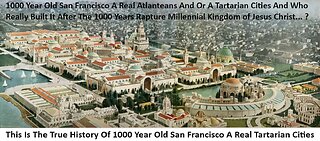 1:15:46
1:15:46
What If Everything You Were Taught Was A Lie?
3 days agoThis Is The True History Of 1000 Year Old San Francisco A Real Tartarian Cities
5.14K9 -
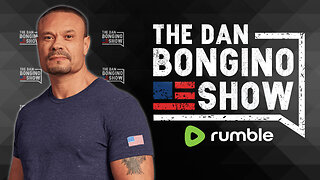 LIVE
LIVE
The Dan Bongino Show
1 hour agoLIVE: The Dan Bongino Radio Show - 05/30/24
40,677 watching -
 LIVE
LIVE
vivafrei
4 hours agoTrump Trial VERDICT WATCH! Liberals Fixated on Menstruation! AND MORE! Viva Frei Live!
6,654 watching -
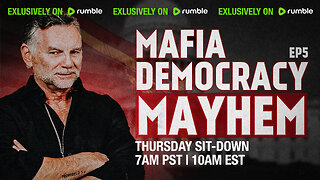 1:05:33
1:05:33
Michael Franzese
21 hours agoMichael Franzese LIVE! | Trump's Trial & Getting CANCELED in The UK | Ep. 5
6.07K16 -
 LIVE
LIVE
Benny Johnson
2 hours agoTrump Trial VERDICT Live! Jury Ready To Declare Donald Trump NOT GUILTY | Biden Regime in PANIC 🚨
20,152 watching -
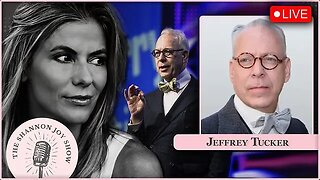 1:46:55
1:46:55
The Shannon Joy Show
4 hours ago🔥🔥LIVE Exclusive W/ Jeffery Tucker: Kickbacks, Bitch-Slaps & “Too Much Fooking Money” The OUTRAGEOUS Morens Emails Implicating FAUCI!🔥🔥
16.3K3 -
 LIVE
LIVE
Akademiks
17 hours agoNew DRAKE RERENCE TRACKS LEAK! WTF. Diddy case and victims infront of GRAND JURY? INDICTMENT?
7,273 watching -
 14:04
14:04
Breaking Points
1 day agoDems 'FULL BLOWN FREAKOUT' Over 2024 Disaster
16.9K16 -
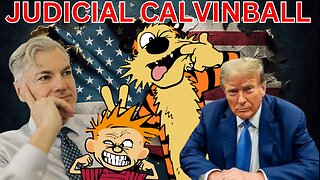 2:58:12
2:58:12
Wendy Bell Radio
8 hours agoJudicial Calvinball
60.4K77 -
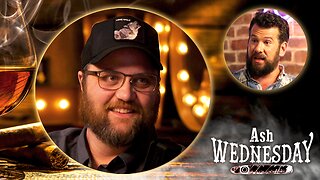 1:15:16
1:15:16
Steven Crowder
3 hours agoMagic: TheQuartering | Ash Wednesday with Jeremy Hambly
110K203